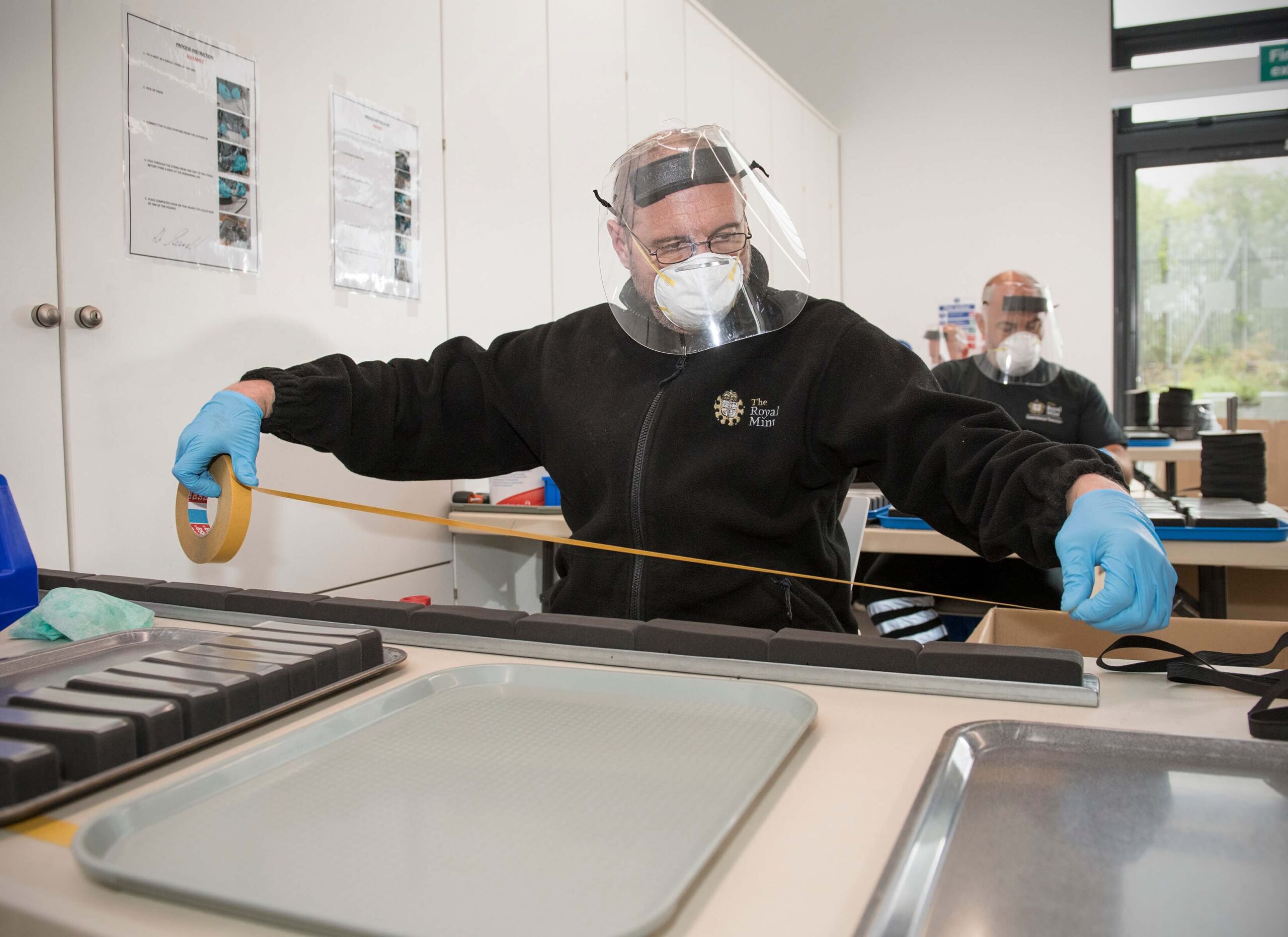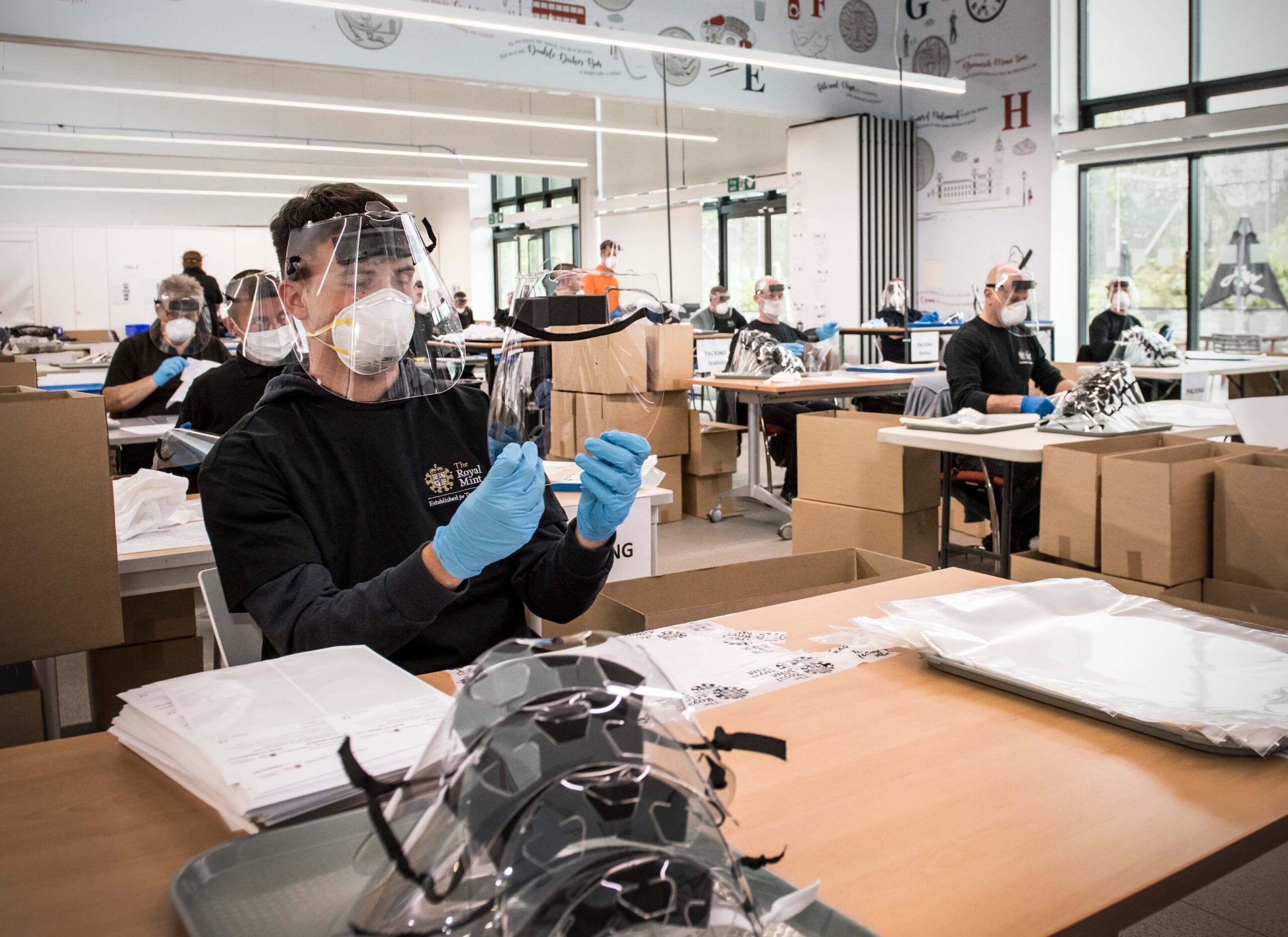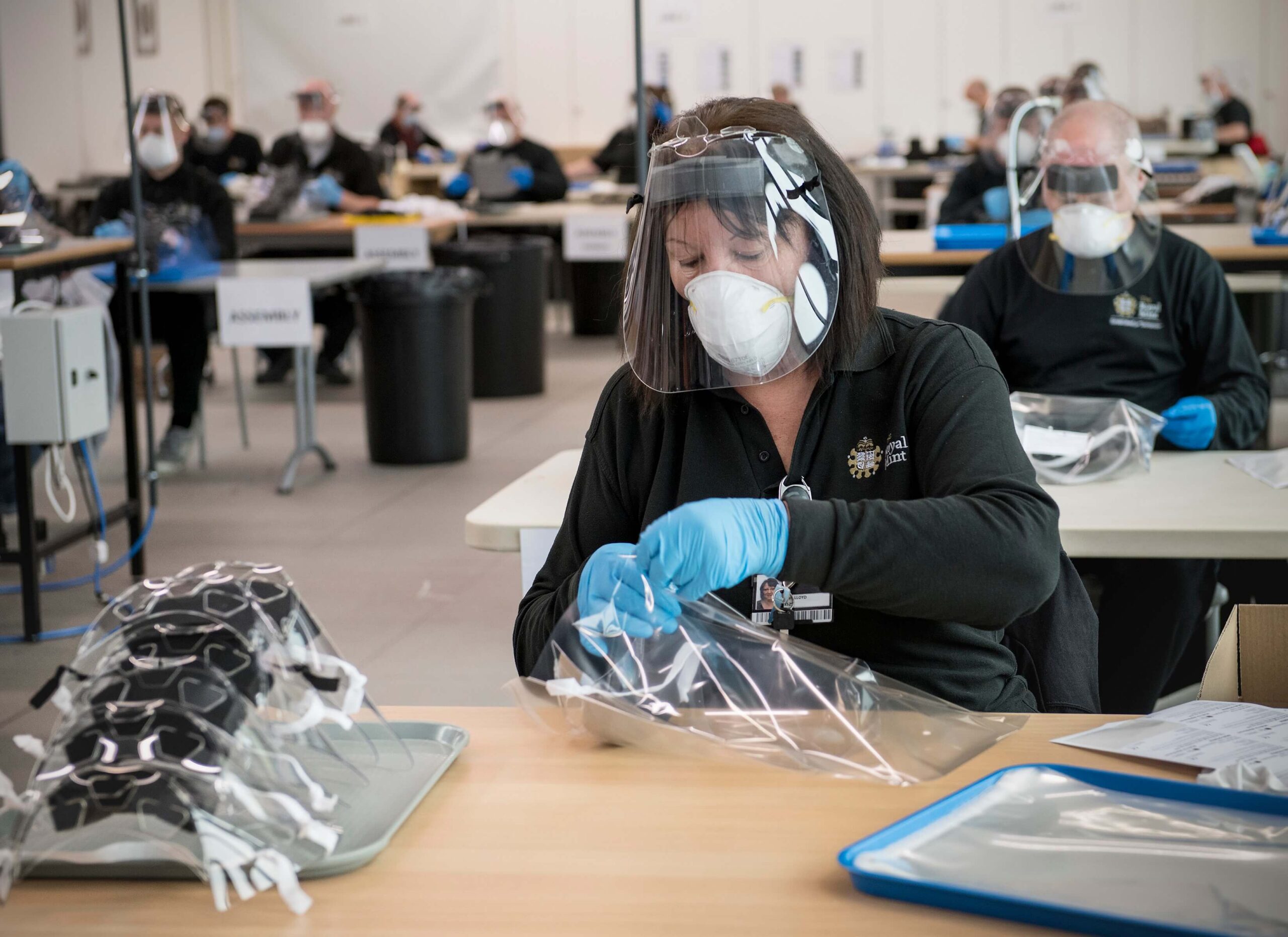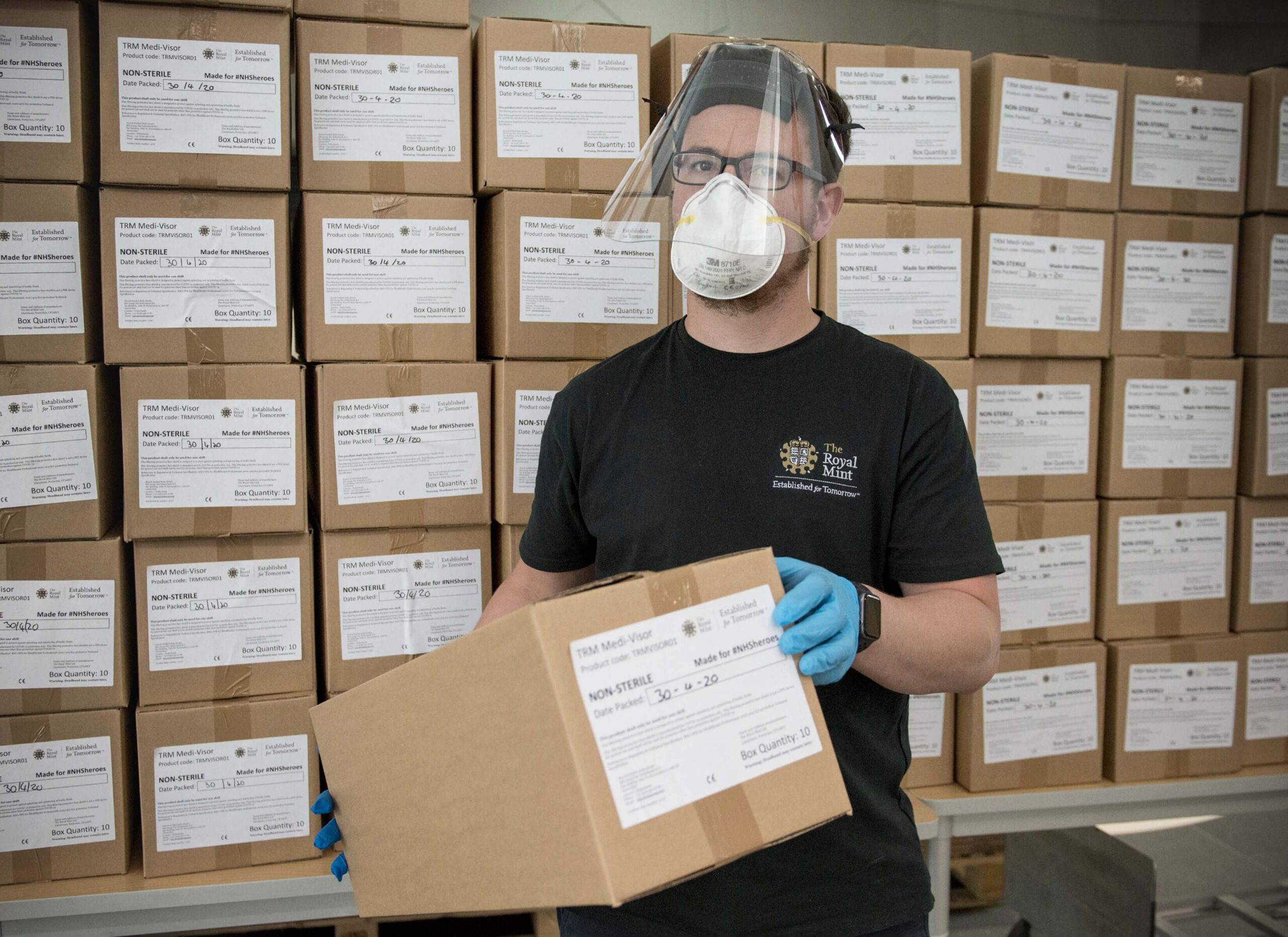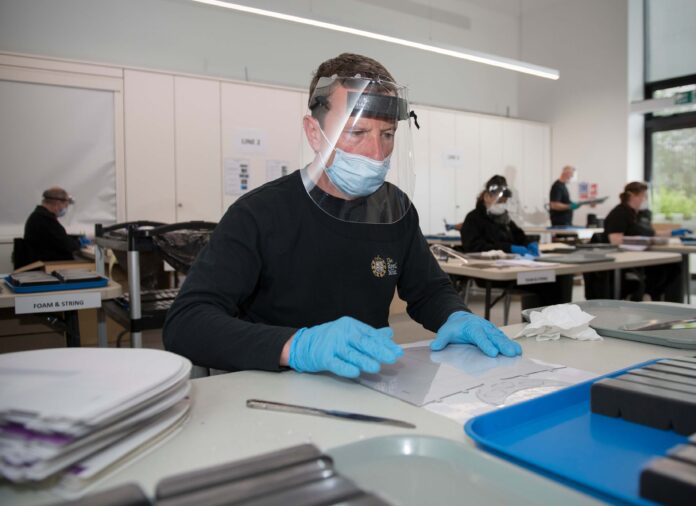
It isn’t unusual in times of national emergency for companies with manufacturing capacities to be called upon by governments to use their skills and facilities to produce needed equipment outside their realm of speciality. In the case of the Royal Mint, this was no exception when the Chancellor of the Exchequer, Britain’s equivalent of the Minister of Finance called on them to produce of all things – safety visors. The arrival of the Wuhan Strain of COVID-19 or Coronavirus to Europe and the US in early March caught many pharmaceutical and medical equipment companies by surprise. Those companies realised their stocks were critically low and most of their manufacturing hubs were located in facilities not too far from the epi-centre of the origin of the virus in Wuhan, China. As the Chinese government put into force a mandatory shut-down of this region to contain the spread of COVID-19, exporting vital safety equipment proved to be far too challenging, if not impossible.
Royal Mint Began to Manufacture Safety Visors in April
As COVID-19 spread around the globe, the need for life-saving equipment such as Personal Protective Equipment – abbreviated as PPE was crucial and as such, it would be necessary for companies in the UK to meet the demand. At this time, the Royal Mint stepped up to utilise their production site and modify their facilities in order to begin the manufacture of needed items – and specifically, safety face protection visors.
Teaming up with some of the UK’s prominent supply chains which have included companies such as Brammer, TJ Morgan and Technical Foam, they were able to source the needed materials and begin the process to mass manufacture. After Royal Mint engineers created a design in just 48 hours, unsurprisingly, they became the first firm in the UK to secure BSI safety approval. Necessary and requisitioned materials were transported to the Royal Mint’s facilities in Llantrissant, Pontyclun in Wales for the next stages of manufacture which also included precision assembly and adjustment. Production began in early April, with the team at the Royal Mint proving to be quite adept in this field, manufacturing some of the best quality PPE currently available to the National Health Service and other departments of first-responders.
Production Takes Place under Strict Hygiene Guidelines
Britain’s Finance Minister Rishi Sunak who is known as The Chancellor – and as a consequence, Master of the Mint, commented of the Royal Mint’s production:
“It’s vital our brave NHS workers have the protective equipment they need to safely care for those affected by the coronavirus outbreak”
“I applaud the Royal Mint for refocusing their efforts and working around the clock to play their part during this national emergency.”
To date, the Royal Mint have produced more than 500,000 visors and are currently producing around 15,000 visors a day. To abide with national health and safety guidelines while in the workplace, each member of the Royal Mint’s team who are part of the production wears one of the protective visors they manufacture along with a face mask and latex gloves to lessen the threat of further spread of COVID-19. Their pledge to produce more than 1.9 million visors is well and truly on its way to fulfilment.
While the manufacture of visors is paramount in terms of priority to protect first-responders, the activities of the Royal Mint which includes the production of coins is also underway though somewhat curtailed. A variety of collector coins have been launched during this time of which the 75th anniversary of Peace in Europe – VE-Day £2 coins was the most recent and launched on the 8th May.
The author, Michael Alexander, is president of the London Banknote and Monetary Research Centre.
Recently he reported about the curious case of BREXIT coins and the re-introduction of Toman in Iran.



